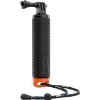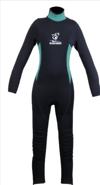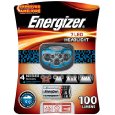The Philippines is Asia’s largest catholic country and the second largest archipelago on Earth, with more than 7000 islands located between the Philippine Sea and the South China Sea. You’ll find lots of beautiful beaches there, complemented by endless green rice fields, gorgeous smoking volcanoes, amazing small primates such as endemic tarsiers, a mysterious karst formation - the Chocolate Hills and, of course, friendly people with big smiles. Be prepared to hop on and off various islands and use all types of transportation: plane, bus, train, boat, ferry and a funny jeepney, which is a jeep-like vehicle that you jump on with your knees!
The Philippines is characterized by a typical tropical climate - hot, humid, and with a rainy season. Most people visit between December and April, months with cooler and more pleasant temperatures as well as the dry season in most of the country. However, this does mean that resorts become much pricier around Easter and the New Year. May and November are still good months to visit in, though temperatures begin to rise in March and will have already climbed up to a stifling 36°C by May. If you want a deal, it’s best to visit during the rainy season, from June to September, however typhoons will often cancel flights or make roads impassable during these months. Though the eastern seaboard is usually dry during this time, it is a gamble, as the country can experience typhoons which cause days of unrelentless torrential downpour.
High Season
December — April
Average temperature
88–72 °F
31–22 °C
Average number of rainy days 7-4
Shoulder Season
May and November
Average temperature
90–75 °F
32–23 °C
Average number of rainy days 10-12
Low Season
June — September
Average temperature
89–75 °F
32–24 °C
Average number of rainy days 16—22
Average temperature
Average number of rainy days
The following links are affiliate links to Amazon.com or other local Amazon web stores - it depends on your location. The listed prices of all items are the US Amazon store prices at the time of publishing. If you are visiting us from outside the USA and there is an analogous item in your local Amazon web store, you'll be redirected there automatically. We do our best to keep all prices and descriptions up to date, but if you find any errors or inaccuracies, don't hesitate to contact us using our feedback page!
Recommended Travel Guides2
City walking10 items
Manila is considered one of the most underrated cities in Asia, though some people call it “the pearl of the Orient”. This vibrant, fast developing and multicultural city is probably not for everyone, but it is a blast for those who are not afraid of jumping into its bustling sprawl to enjoy the beautiful and culturally complicated chaos of the Manila streets.
Don’t forget to enjoy numerous historic and religious monuments, national museums and parks, authentic cuisine, great shopping and, of course, crazy nightlife. Due to climatic concerns, it would be best to prepare some items in advance to ensure that you can fully enjoy your city walking!
-
Good daypack
-
Sunglasses
-
Face sunblock
-
Body sunblock
-
Hats
-
Camera (portraits and city views)
-
Portable battery charger (for your phone and camera)
-
Facial cleansing wipes
-
Hand wipes
-
Travel umbrella
Beaching10 items
Among the 7000 islands the Philippines has to offer, every traveller will find something special and delightful. It’s no secret that this country claims some of the world’s most spectacular sunsets, so pick an island, head to a beach bar and just watch life go by, soaking in the moment. El Nido and Coron beaches on Palawan Island, Boracay Island, Panglao in Bohol, Bantayan Island, Siargao Islands - these are merely a handful of the most beautiful beaching destinations you shouldn’t miss!
-
Body sunblock
-
Face sunblock
-
Sun oil
-
After sun care
-
Moisturizing spray
-
Sunglasses
-
Hats
-
Portable shade for the beach
This thing is extremely important, as you cannot always find natural shade on islands.
-
Hand wipes
-
UV protection shirts
 O'Neill UV Sun Protection Men's Basic Skins Long Sleeve Crew Rashguard$24.14
O'Neill UV Sun Protection Men's Basic Skins Long Sleeve Crew Rashguard$24.14 O'Neill UV Sun Protection Men's Basic Skins Tee Rashguard$24.95
O'Neill UV Sun Protection Men's Basic Skins Tee Rashguard$24.95 O'Neill UV Sun Protection Women's Basic Skins Long-Sleeve Rashguard Top$17.96
O'Neill UV Sun Protection Women's Basic Skins Long-Sleeve Rashguard Top$17.96 O'Neill UV Sun Protection Women's Basic Skins Short-Sleeve Crew Rashguard Top$17.99
O'Neill UV Sun Protection Women's Basic Skins Short-Sleeve Crew Rashguard Top$17.99 Speedo Kid's UV Long Sleeve Sun Shirt$18.95
Speedo Kid's UV Long Sleeve Sun Shirt$18.95
Snorkeling6 items
The Philippines is the ultimate destination for snorkeling and scuba diving, and here’s why: between the months of November and June, you can take part in an unforgettable experience by snorkeling with whale sharks in Dosol Bay (diving is forbidden there). Also, don’t miss the Alaminos Islands with their giant clam sanctuary and Apo Island which features giant turtles!
-
Snorkling set: fins, mask, tube
-
UV protection shirts
 O'Neill UV Sun Protection Men's Basic Skins Long Sleeve Crew Rashguard$24.14
O'Neill UV Sun Protection Men's Basic Skins Long Sleeve Crew Rashguard$24.14 O'Neill UV Sun Protection Men's Basic Skins Tee Rashguard$24.95
O'Neill UV Sun Protection Men's Basic Skins Tee Rashguard$24.95 O'Neill UV Sun Protection Women's Basic Skins Long-Sleeve Rashguard Top$17.96
O'Neill UV Sun Protection Women's Basic Skins Long-Sleeve Rashguard Top$17.96 O'Neill UV Sun Protection Women's Basic Skins Short-Sleeve Crew Rashguard Top$17.99
O'Neill UV Sun Protection Women's Basic Skins Short-Sleeve Crew Rashguard Top$17.99 Speedo Kid's UV Long Sleeve Sun Shirt$18.95
Speedo Kid's UV Long Sleeve Sun Shirt$18.95 -
GoPro camera
-
GoPro LCD display
-
Hand buoy
-
Anti fog pads
Scuba diving7 item
Diving highlights include the World Heritage site of Tubbataha, thresher sharks at Malapascua, big pelagics at Panagatan and the wrecks of Subic Bay. But there are definitely more, including are Puerto Galera (which boasts a huge diversity of fish year-round) , Apo Island (great macro diving and good chances to see bigger marine life like sharks, turtles, manta rays, and barracudas), Busuanga (great wreck diving) and Mindanao Island dive sites (famous for a coral system).
-
Diving wetsuit
-
Snorkeling set: fins, mask, tube
-
GoPro camera
-
GoPro LCD display
-
Red filter (essential for deep blue water)
-
Hand buoy
-
Anti fog pads
Mount hiking19 items
In the Philippines there are plenty of hiking opportunities, from easy one-day walks to challenging multi-day treks. Among the most famous ones are Mt. Pinatubo (1486 m, January is the best time to visit), Mt. Kanlaon (2435 m, February to May) and the highest peak in the country, Mt. Apo (2954 m, March to May). However, you might opt for some other beautiful treks as well. Mt. Mayon is famous for having the most symmetrical volcanoes in the world, and Mt. Bulusan is celebrated for its diverse eco-system.
-
Good daypack
-
Good hiking boots
If you opt for a long and exhausting trek, then it's better to have proper hiking boots. Otherwise, you can
 Timberland White Ledge Waterproof Boot$58.52
Timberland White Ledge Waterproof Boot$58.52 Timberland Women's White Ledge Hiking Boot$73.47
Timberland Women's White Ledge Hiking Boot$73.47 -
Light hiking boots
-
Long hiking pants
-
Long sleeve shirt
-
Trekking poles
-
Trekking socks
-
Jungle rain poncho
-
Torch and headlamp
-
Extra torch batteries
-
Warm trekking gloves
-
Softshell jacket
-
Anti leech socks (if rain season)
-
Face sunblock
-
Antiseptic wipes
-
Waterproof bandage
-
Lighter
-
Knife
-
Good binocular
Jungle trekking22 items
However, volcanoes aren’t the only great hiking opportunities in the Philippines. Enjoy trekking in the rice terraces - one of the most breathtaking landscapes can be found in Banaue. Or, do a small hike in one of the country’s signature sites - the Chocolate Hills, an unusual geological formation in Bohol. And you definitely won’t want to miss the chance to see the smallest primates on Earth - endemic tarsiers!
Also, your typical hiking boots are not the best option in the tropical rainforest due its very high humidity. Since normal hiking boots are made of leather, some organisms could find them attractive and move in there. If this happens, then after only a few days of trekking, you’ll basically need to throw them away. When I was preparing for my first jungle experience, I searched far and wide to find the type of boots which would be the best for me. Then, I recalled that the US army had created jungle boots specifically for its soldiers when there was a war in Vietnam. I googled this and ended up buying a pair of these boots. After I did few treks in them, I realized that I had made a very smart choice. The boots are made with an artificial fabric and materials which get dry much quicker than normal hiking boots (which is ideal, considering humidity). They also have very good ankle support and they are tall, so you can wear your leech socks and you won’t be afraid of getting bitten. But of course, light trekking boots with synthetic material would be also a good option, especially if the trek is short.
Other items mentioned below are also musts for jungle trekking. Garbage bags, for example, could be very useful when you have a boat ride somewhere in the depths of the jungle. If you put all your bags in separate garbage bags and seal them with a sealing tape, it keeps them from getting wet if it’s raining. I usually use 2-3 garbage bags for each of my bags - a solution which costs much less than a raincover for your bags. Additionally, considering how heavy the rain in the jungles can be, a raincover won’t really help you at all!
-
Good daypack
-
Waterproof bag
-
Anti leech socks
-
Light hiking boots
-
Long hiking pants
-
Jungle rain poncho
-
Waterproof bags for camera and documents
-
Good binocular
-
Whistle
-
Torch and headlamp
-
Extra torch batteries
-
Lighter
-
Jungle knife
-
Sealing tape
-
Plastic bags
-
Rope
-
Adjustment to vertical peeing for girls
-
GoPro camera
-
Insect head hat
-
High DEET insect repellent
-
Antiseptic wipes
-
Waterproof bandage
Surfing10 items
Great surfing is found easily in The Philippines! However, the waves are a bit variable, so plan to stay for a few days to make sure that you can catch some good waves. The best time for surfing is from October to January. Center Islands, Mindanao, Luzon and Siargao Islands are the best places in the country to enjoy this exciting watersport.
-
UV protection shirts
 O'Neill UV Sun Protection Men's Basic Skins Long Sleeve Crew Rashguard$24.14
O'Neill UV Sun Protection Men's Basic Skins Long Sleeve Crew Rashguard$24.14 O'Neill UV Sun Protection Men's Basic Skins Tee Rashguard$24.95
O'Neill UV Sun Protection Men's Basic Skins Tee Rashguard$24.95 O'Neill UV Sun Protection Women's Basic Skins Long-Sleeve Rashguard Top$17.96
O'Neill UV Sun Protection Women's Basic Skins Long-Sleeve Rashguard Top$17.96 O'Neill UV Sun Protection Women's Basic Skins Short-Sleeve Crew Rashguard Top$17.99
O'Neill UV Sun Protection Women's Basic Skins Short-Sleeve Crew Rashguard Top$17.99 -
Face sunblock
-
Body sunblock
-
Waterproof bandage
-
Antiseptic wipes (if you have some small wounds, scratches)
-
Universal injury relief ointment
-
After sun care
-
Quadcopter with camera
-
GoPro camera
-
Quadcopter for GoPro
Caving12 items
The Philippines is a home to the longest navigable underground river in the world! It’s called Palawan Underground River or St. Paul Subterranean River. Another most-visited cave is Odloman Cave located in Negros. This expansive cave in Mabinay stretches 8.9 km long. It is considered as the 2nd longest and 6th deepest cave in the country, famous for its large galleries, active stream water, and a mix of crystalline formations. The country’s deepest cave is the Sumaging-Latipan-Lomyang Crystal Cave, and you shouldn’t miss it if you want to see stunning natural streams, stone walls, and intricate limestone formations. Frankly speaking, there is an abundance of caving activity to be done in this country, so all you need to do is be prepared!
-
Rubber boots
The cave route is pretty slippery, so you won’t want to wear your running or hiking shoes or trekking sandals. None of these will help you. Instead, a pair of rubber slippers is the best option to crawl through the caves.
-
Good socks
-
Waterproof bag
-
Grip gloves
You’ll need them if some parts of the route are equipped with a rope, and since it’s usually very humid and dirty in the cave, your hands will be wet and grimy. It’s always safer to have grip gloves when sliding on a rope.
-
Torch and headlamp
-
Extra torch batteries
-
Lighter
-
Knife
-
Sealing tape
-
GoPro camera
-
Adjustment to vertical peeing for girls
-
Swimsuit
Vaccination7 items
Make sure you are up-to-date on routine vaccines before every trip. These vaccines include the measles-mumps-rubella (MMR) vaccine, diphtheria-tetanus-pertussis vaccine, varicella (chickenpox) vaccine, polio vaccine, and your yearly flu shot. The following vaccination recommendations are taken from the Centers for Disease Control and Prevention (CDC) webpage.
Hepatitis A
Typhoid
Hepatitis B
Japanese Encephalitis
Malaria
Rabies
Yellow fever
First Aid Kit6 items
The Philippines is a place where it's better be prepared and take care of proper treatment in advance. Make sure you have something in advance against the following symptoms:
Wounds, traumas, cuts
Gastro problems like poisoning or heartburn
Allergic reactions on sun burn, bites of insects, unusual food
Fever and cold
Motion sickness
Strong painkillers

















































































Like this packing list
Like VacayKit